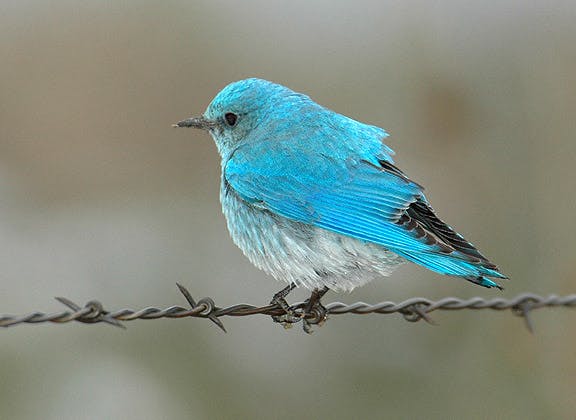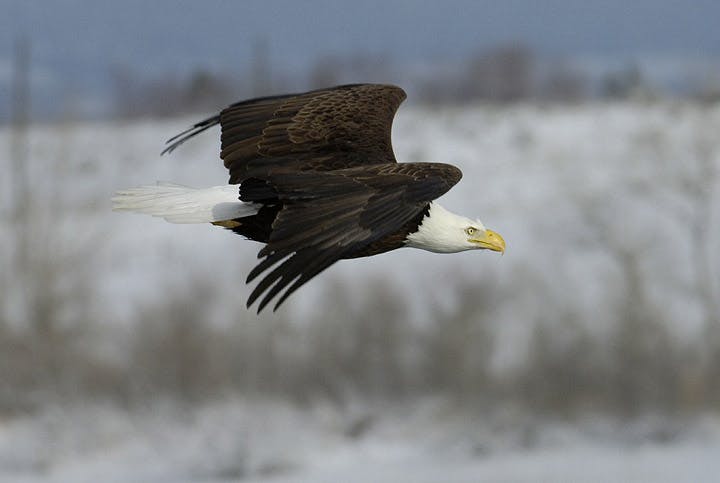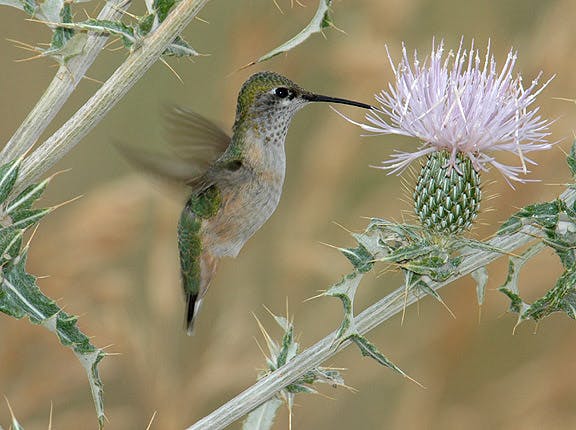Birdwatching with quiet footsteps and an attentive mind will allow you to observe Colorado’s nature with exceptional granularity. Catch a sparkly glimpse of the mountain bluebird or black swift; be humbled by the swopping wingspans of a bald eagle or burrowing owl and dance alongside the greater prairie chicken’s unique, throat-swelling mating call.
Where to Go Birding in Colorado
A general rule is to go near ecological hotspots — close to water or near shifts in vegetation or landscape.
Plan a trip using the Colorado Birding Trail website, where users can pinpoint birding trails all across the state from the eastern plains, Rocky Mountains and atop the rocky Western Slope terrain. The website also has a free downloadable birding guide for the southeast and southwest trails.
When to Go
Birds are most visible around dusk and dawn or after a heavy rain. Like humans, they are hungry in the morning and aren’t shy about venturing out for a gluttonous meal, so beat them to the punch and with binocs and camera in hand. Depending on the bird or area, seasonality might dictate when to go (use the Colorado Birding Trail website as a guide).
What You’ll See
With more than 400 species in Colorado, there’s no telling which wings you’ll see flapping. Favorite Colorado birds to seek out are the mountain bluebird, sandhill crane, hooded merganser, bald eagle, cinnamon teal, calliope hummingbird, western tanager and the white-tailed ptarmigan.
More information on Colorado’s must-see birds and where to find them.
What to Expect
Outings can take anywhere from an hour to a full day, depending on whether you set out alone or book a tour. Each type of birding adventure has its upsides: If you take the self-guided route, you can decide exactly when and where you go and how long you’ll stay. On the other hand, guided tours are led by experts who know the birds’ habits, meaning you might have a better shot at spotting those lesser prairie chickens or burrowing owls. As an added bonus, some tours include a meal!
What to Bring
- Small notepad for recording observations and sketching.
- Hiker-friendly binoculars (small and lightweight) that bring in plenty of light for early morning and evening outings.
- Bird identification booklet or smartphone app for birding.
- Lightweight clothing appropriate for the season. Wear muted earth tones and avoid bright colors that will draw attention.
Fledgling Experiences
If you want to try out your wings before you take flight on a birding journey, we have plenty of options:
- Rocky Mountain Raptor Program in Fort Collins offers numerous in-person and virtual experiences.
- An array of festivals celebrating every avian from mountain plovers to sandhill cranes.
- Meet-and-greets with owls and hawks at Denver Zoo or Cheyenne Mountain Zoo.
- Free raptor presentations each weekend at the Nature & Wildlife Discovery Center in Beulah. (They also offer free guided bird walks every fourth Saturday.)
Insider Tip:
Tuning into the natural surroundings is essential. Take your time and be as silent as possible in order to hear the tiniest tree rustling that might lead to a once-in-a-lifetime sighting. You may see some birds with a troop of kids and a pack of dogs, but it is less likely that you'll see or hear the shy ones, and those are sometimes the most fun to see. A patient and respectful approach is the best way to lure them into view.






